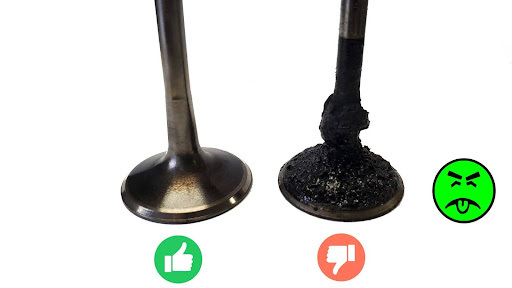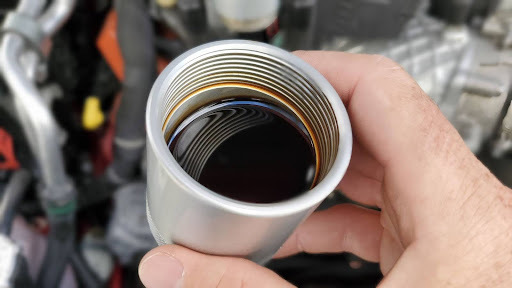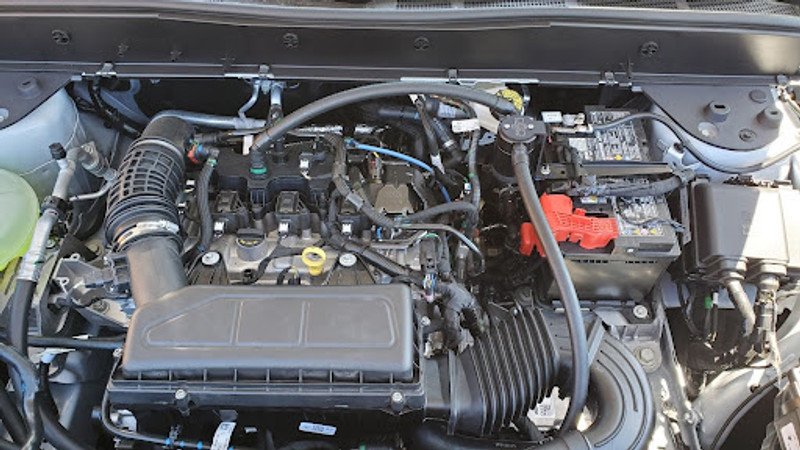Signs You May Need an Oil Separator Even If Your Car Is Stock
Posted by JLOSC on 2025 Aug 21st
Modern engines meet tight emissions targets, but they still vent oil-laden crankcase gases back into the intake. Over time, that vapor coats valves, intercooler fins, and spark-plug electrodes. A catch can—more accurately referred to as an oil separator—captures the mist before it turns to sludge. Below, you'll find five clear signals that a factory-fresh daily driver can benefit from this small, preventive upgrade.
Stock car oil separator
Factory PCV systems route blow-by straight into the intake because it's cheap, emissions-compliant, and quick to assemble on an assembly line. It is not, however, the cleanest solution. A stock car oil separator adds a baffled chamber between the crankcase and manifold; oil droplets condense, drain back to the engine, and only dry air continues forward in theory. However, most stock car oil separators are not very efficient at this task. Owners who add a J&L Oil Separator early can delay costly intake cleanings, keep plugs cleaner, and preserve factory power and fuel economy as the mileage racks up. A solid-aluminum J&L oil separator typically installs in about twenty minutes with basic tools—an easy preventive step that costs far less than the repairs it helps you avoid later.
Signs you need an oil separator on a stock engine
During routine inspections, watch for these red flags:
- Oily film on the throttle body: A sticky plate that doesn't snap shut often signals vapor intrusion.
- Inspection of the factory PCV line for oil residue.
- Residue inside intercooler end tanks: A fingertip swipe should come back dry; slick means trouble.
- Black streaks in intake piping: Any dark trail near hose clamps signals condensation points.
Catching these signs early lets a separator prevent heavier carbon that requires chemical or mechanical cleaning.
Symptoms you may need an oil catch can
Some clues surface on the road rather than under the hood:
- Intermittent idle stumble: Oil-fouled plugs misfire when the engine is warm.
- Slow drop in fuel economy: Carbon on valves disrupts atomization and forces richer trims.
- Cold-weather hesitation: Thick deposits absorb fuel vapor until the cylinder head reaches temperature.
- Rattle or "carbon knock" under load: Hot spots from oil residue raise cylinder pressure.
Because these issues creep in gradually, they rarely trip a fault code. Fitting a catch can is cheaper than chasing performance loss later.
Should I install an oil separator on a stock car?

An example of a clean intake valve vs one carbon-coated.
Three everyday scenarios justify the upgrade even on an untouched build:
1. Direct injection: With no fuel spray to wash valves, DI engines collect deposits fast on the intake valves.
2. Turbocharged and Supercharged engines: These engines create more crankcase pressure and can push more oil vapor through their PCV systems than Naturally Aspirated engines.
3. Short-trip or stop-and-go driving: Moisture never entirely burns off, creating denser vapor that overwhelms the stock baffle.
Most owners drain the can at each oil change, and the system protects the vehicle for the life of the vehicle. Owners report steadier compression numbers at 100,000 miles and spark-plug intervals that match the factory schedule instead of shrinking by half.
Long-term payoff: prevention over repair
A separator does not add horsepower on a dyno sheet, but it preserves the power you already paid for. By keeping chambers clean, it stabilizes octane requirements, reduces knock retard, and allows timing to stay where the ECU placed it at the factory. Fuel mileage holds steady, and catalytic converters face fewer oil-ash deposits. This modest upfront cost undercuts the price of valve cleaning, plug replacements, or the increased cost from loss of fuel mileage.
Periodic maintenance is simple: drain the can every 3000 to 5000 miles. Most drivers will find the oil separator nearly full (collection rates can vary by vehicle and driver), a visual reminder of what would have coated the valves. In humid climates or turbo cars, inspect every 1000 miles until you learn your engine's pattern. Emptying the unit takes less time than topping off washer fluid, and the captured oil can be recycled with used motor oil at your local parts store. That one-minute routine shields sensors, intercooler efficiency, and long-term resale value far better than any additive poured in after the damage is done.

Oil collected in a J&L Oil Catch Can
Learn more and choose the right kit
For installation walk-throughs, fitment data, and a full catalog of billet catch cans for everything from daily drivers to supercharged builds, visit the J&L Oil separator website. You’ll find clear FAQs, brand-specific kits, and the technical details you need to add low-cost, long-term protection to your stock engine. Call us!









